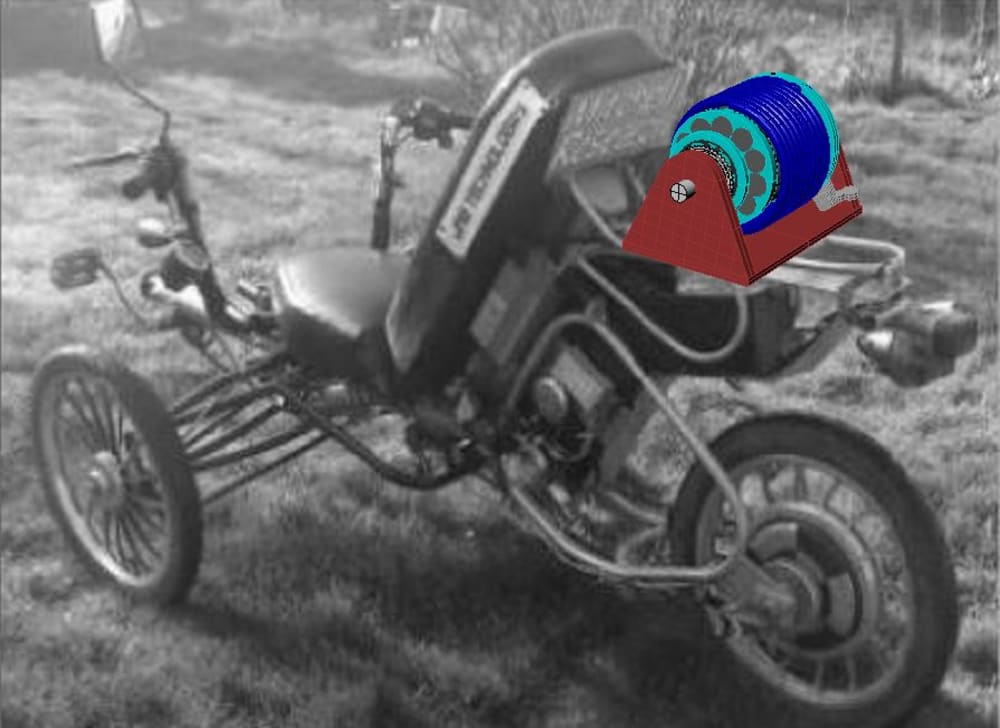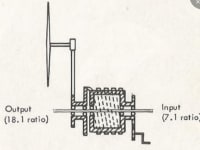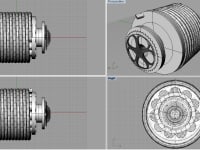This idea was developed during research for extending the range of an E TRIKE
Human power worked well to extend the range particularly on the flat trails which were constructed on disused railway tracks but on a trail where there was a long steep hill climb the power drawn from the battery seriously compromised range and although there was a corresponding long downhill section, regenerative application during braking never adequately replenished the battery.
Adding batteries created a weight penalty which worked at odds with our design intent since the majority of bike trail riding was on flat terrain and the hilly sections were relatively rare.
Speculating on what add on power source would be available to resolve the hill climbing problem, a 1933 article on a child's rubber powered go kart which used strips of inner tubing to power the machine over a reasonable distance showed up.
The undercarriage rubber strips in the child's go kart, were impractical for use in the E TRIKE but a helically wound arrangement using bungee cord wound round a cylindrical drum similar to a concept proposed for man powered aircraft back in the 1970s showed promise. (see sidebar)
By using modern high strength materials in the design as shown in the sidebar a very lightweight device could be constructed having a capacity of up to 400 Watts, with a very small weight penalty when compared with extra batteries.
That capacity is enough for any perceived hill climbing need and a bonus is that by changing the cross section of the rubber bungee cord several different power outputs can be tailored to suit circumstances.
The middle sidebar shows a General Arrangement of the idea and the lower sidebar shows a rendering of the Rubber Motor on the E-Trike carrier.
The drive to the rear wheel can be via a chain or a cogged tooth belt and the locked in energy in the helically wound rubber bungee cord is released via a handlebar control which is engaged at the beginning of a hilly section and together with applied human power via the pedals power drain of the battery is significantly reduced as the slope is traversed.
On the downhill section regenerative braking through the BLDC motor partially recharges the battery and surplus braking effort is diverted to rewind the Rubber Motor.
In this way by utilizing all three power sources (Battery, Human Power and Rubber Motor) the range and utility of the E-Trike is greatly enhanced.
Development of this concept is ongoing. For example stiffer rubber or larger cross sections would likely provide greater acceleration relieving the battery of high amperage delivery in overcoming inertia from a standing start.
Like this entry?
-
About the Entrant
- Name:John Mitchell
- Type of entry:individual
- Software used for this entry:RhinoCad
- Patent status:none








